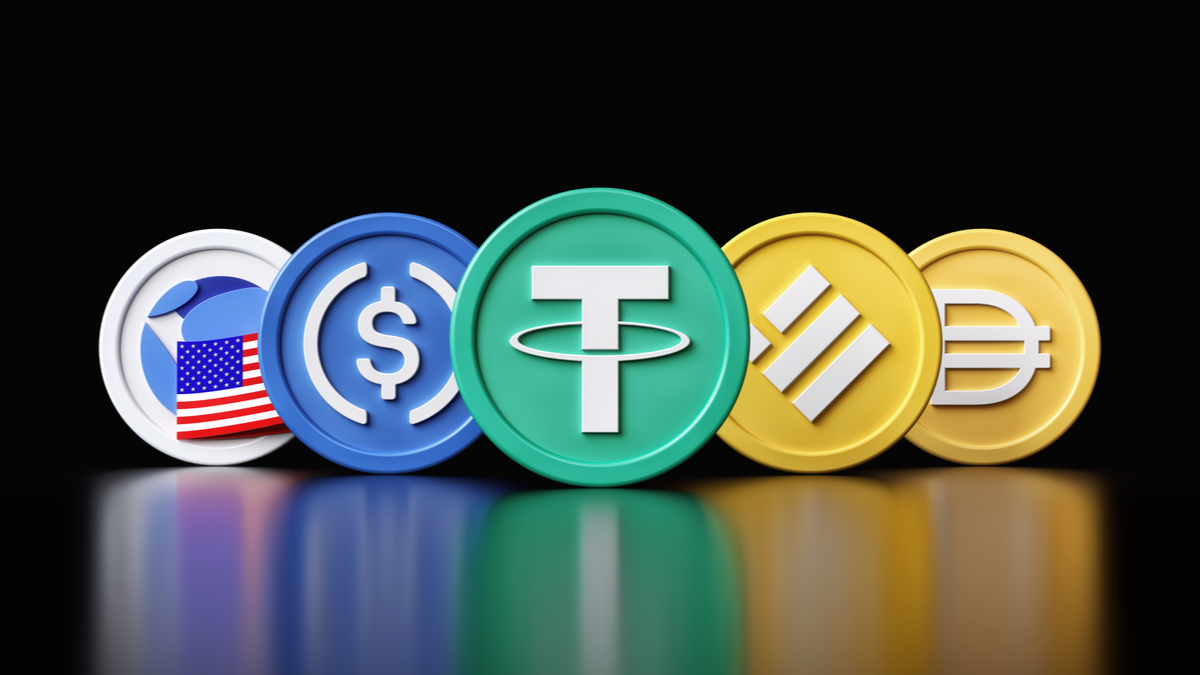Quick Links
Cryptocurrencies are notoriously volatile. Stablecoins promise a safe haven from fluctuating prices, but even they're not risk-free. Here's how they work.
The Best of Both Worlds
Just like other cryptocurrencies that use blockchains, stablecoins are secure and anonymous. But similar to the money in your wallet, stablecoins do not rapidly appreciate or depreciate in value.
Stablecoins are designed to maintain the same price as the real-world asset it reflects. They act as an equivalent to cash in the cryptocurrency world. They can be pegged to government back currencies like the US dollar or even precious metals. For example; popular stablecoins such as Tether (USDT), USD Coin (USDC), and TerraUSD (UST) all track the US dollar. (Note that UST was designed to track the US dollar but failed to do so in May 2022.) Tether Gold (XAUT) and Pax Gold (PAXG) follow the price of one ounce of gold.
Stablecoins Aim to Achieve Balance
There are two primary means stablecoins achieve this stability, collateralization and algorithms. Stablecoins that use collateralization should hold a matching amount of a specified asset in their reserves. If a stablecoin has issued $1 million of a coin pegged to the US dollar, then that stablecoin should have $1 million in its reserves. This is similar to how a bank operates. However, collateralized stablecoins are somewhat obscure because they cannot be audited easily.
Contrarily, algorithmic stablecoins use programmable, open-source smart contracts to maintain stability. UST is the most popular algorithmically backed stablecoin. These smart contracts either create or burn more coins to ensure the base value is sustained. Stablecoins using algorithms can be audited readily by any person.
Despite being easily audited, there are some doubts about algorithmic stablecoins. Critics claim that they are fragile. They rely upon demand and if demand falls then they can lose their peg. In May 2022, this happened when UST fell to as low as $0.68 in less than 12 hours.
Stablecoin Use Cases
Imagine someone is invested in Bitcoin and the price rises quickly. It could be wise to take some profits. A user can sell their Bitcoin profits and convert them into a stablecoin like Tether or USDC. By exchanging their Bitcoin for stablecoins, investors avoid volatility.
The other added benefit of stablecoins is that they make purchasing cryptocurrency a little easier. Using the previous example, if that person plans on purchasing more Bitcoin once the price has retraced, all they would have to do is convert the stablecoin value back into Bitcoin. Without stablecoins, users would have to deposit money from a bank account before being able to purchase more cryptocurrency.
One of the lesser-known but profitable uses of stablecoins is by earning interest. Exchange platforms offer a variety of interest rates on stablecoin holdings. For example, BlockFi offers rates of up to 7.25% on qualifying stablecoins.
Interest rates this high are better than what many banks can offer. And since stablecoins do not fluctuate in value, some people have begun to replace their savings accounts with these high-earning stablecoins.
However, we're not necessarily recommending you do this. While stablecoins may not have the same frequent price swings as other cryptocurrencies, it's often unclear whether they're actually backed by reserves, as advertised.
Not All Stablecoins Are Equal
The increased utility and adoption of stablecoins has put them in the crosshairs of government regulation. One of these is the world's most popular stablecoin, Tether. It uses a collateralized method to maintain stability with the US dollar. It has a market cap of $82.7 billion. Theoretically, it should have that same amount in its reserves. Yet there is skepticism that the company behind Tether does not actually hold this in reserves. If Tether were to go bankrupt, billions of investor dollars would be lost because there is no equal amount of collateral held.
Many politicians at the federal level have voiced concern over stablecoins. Their concern is presumably warranted when considering how widely used Tether and other stablecoins are. President Biden's 2022 Executive Order on digital assets highlighted the anticipated course of action by instructing government agencies to research "illicit finance risks posed by digital assets, including cryptocurrencies, stablecoins, CBDCs, and trends in the use of digital assets by illicit actors."
While not completely risk-free, stablecoins can be used to serve many purposes. Stablecoins provide much-needed utility when making transactions with cryptocurrency. In addition, stablecoins offer an alternative to traditional savings accounts. High interest rates and reduced volatility attract those looking for a safe haven from some of the roller coaster prices of cryptocurrencies.

